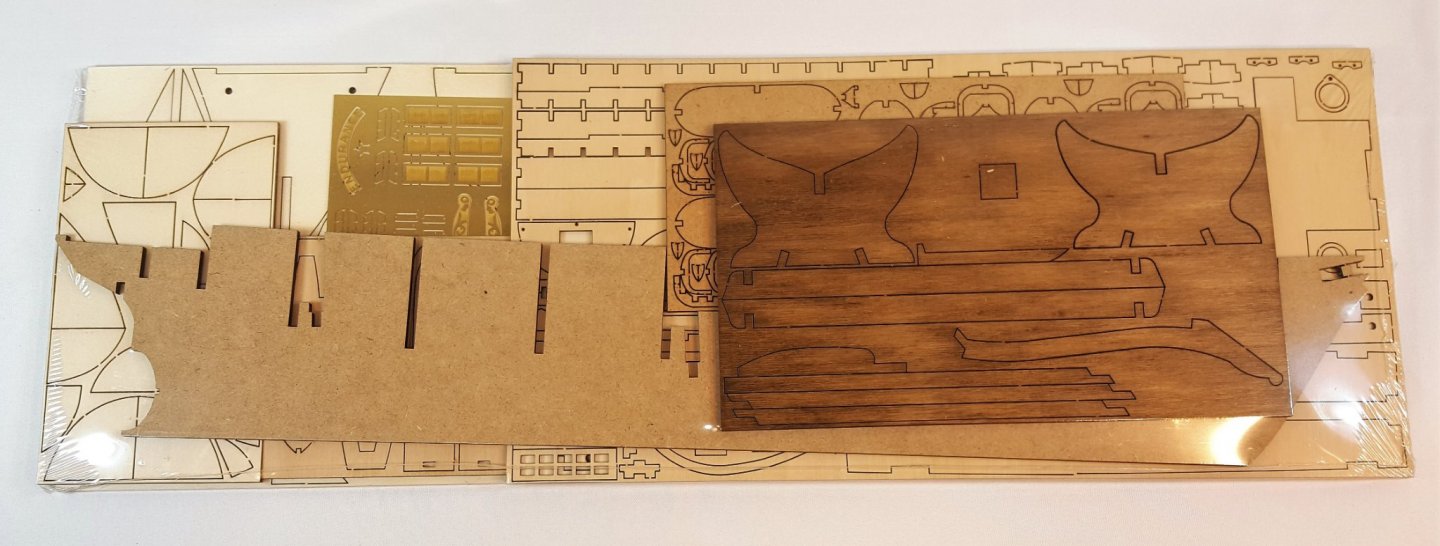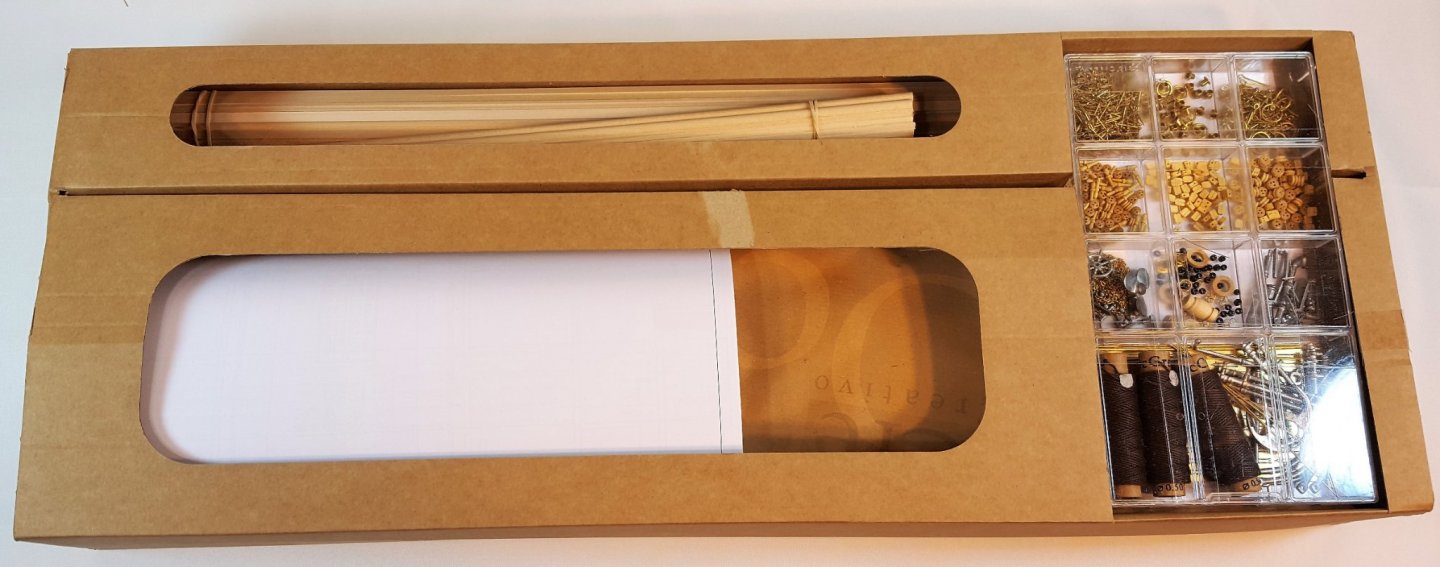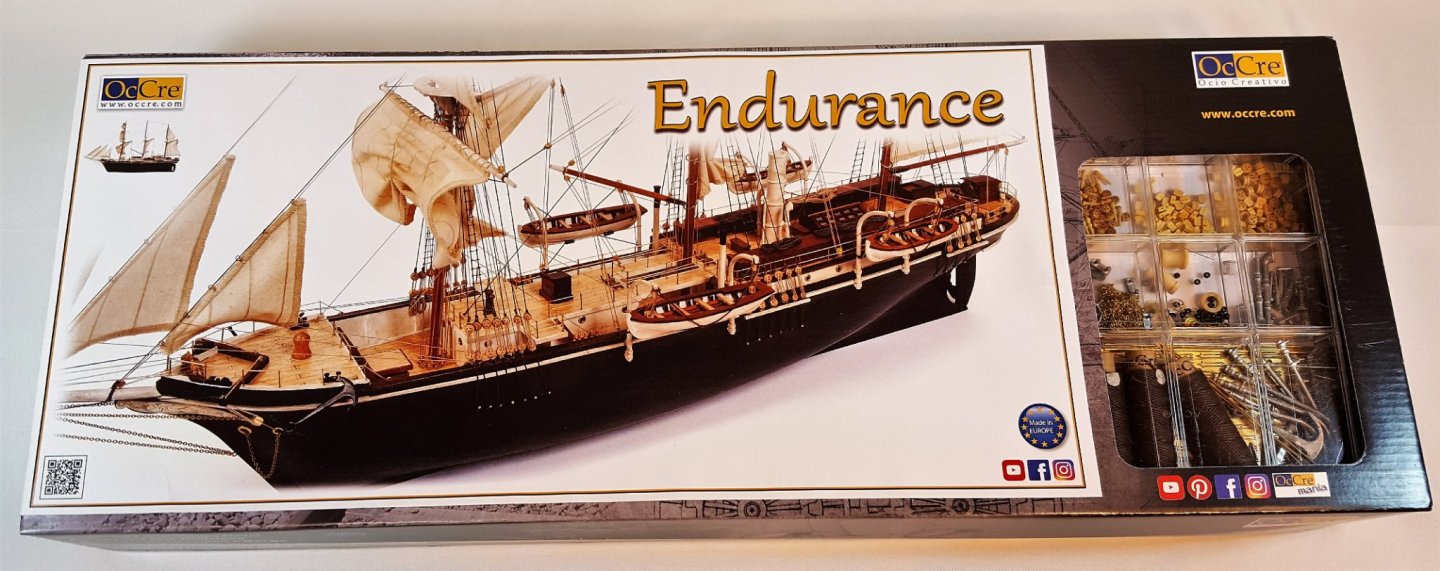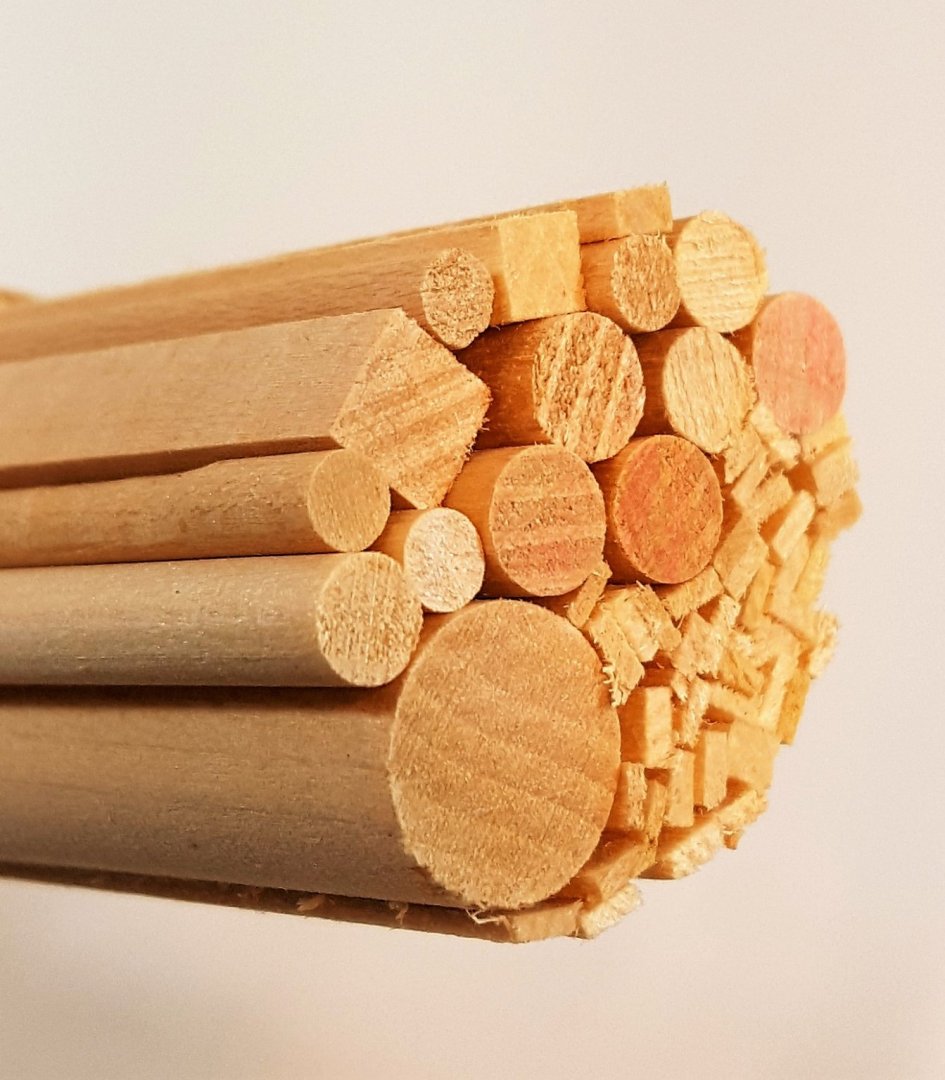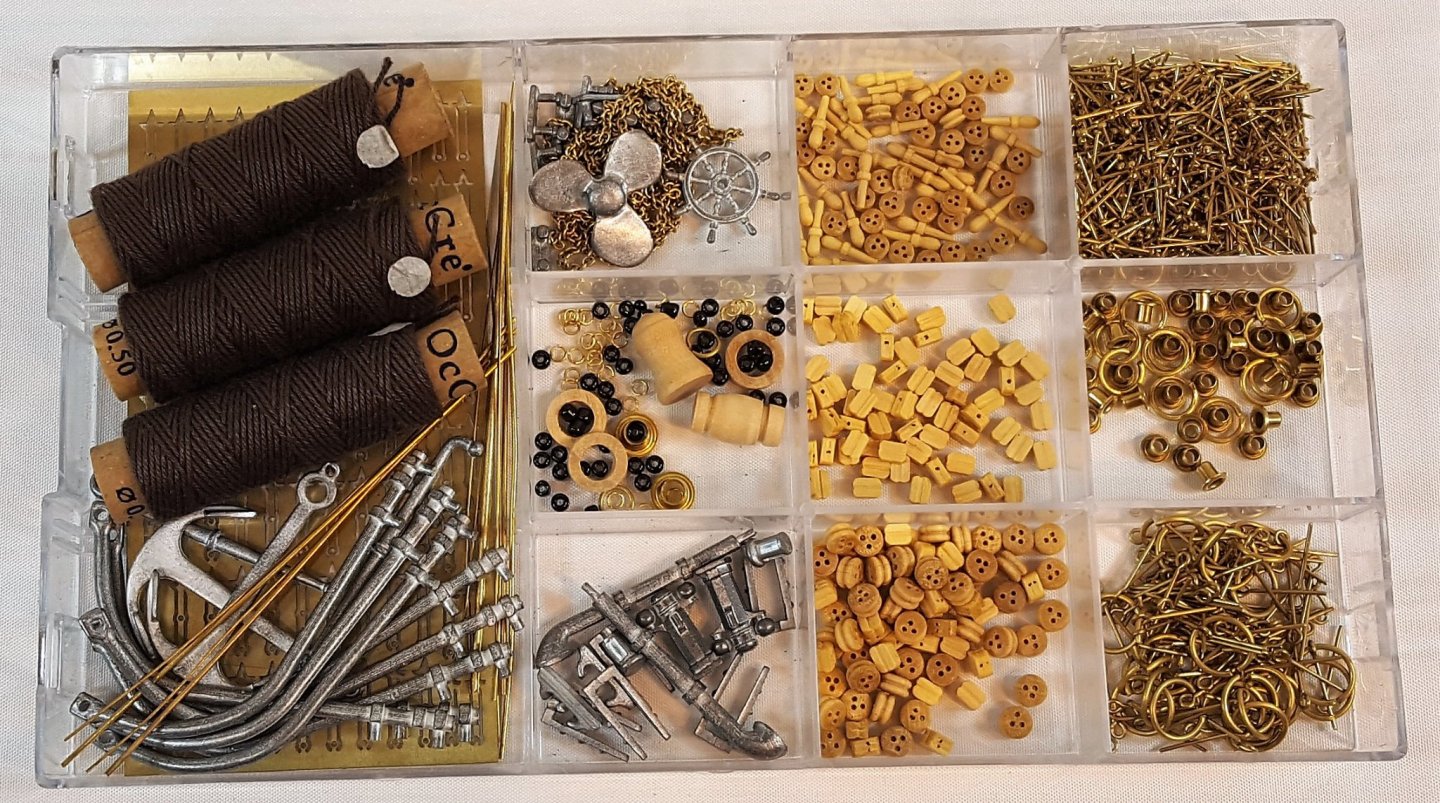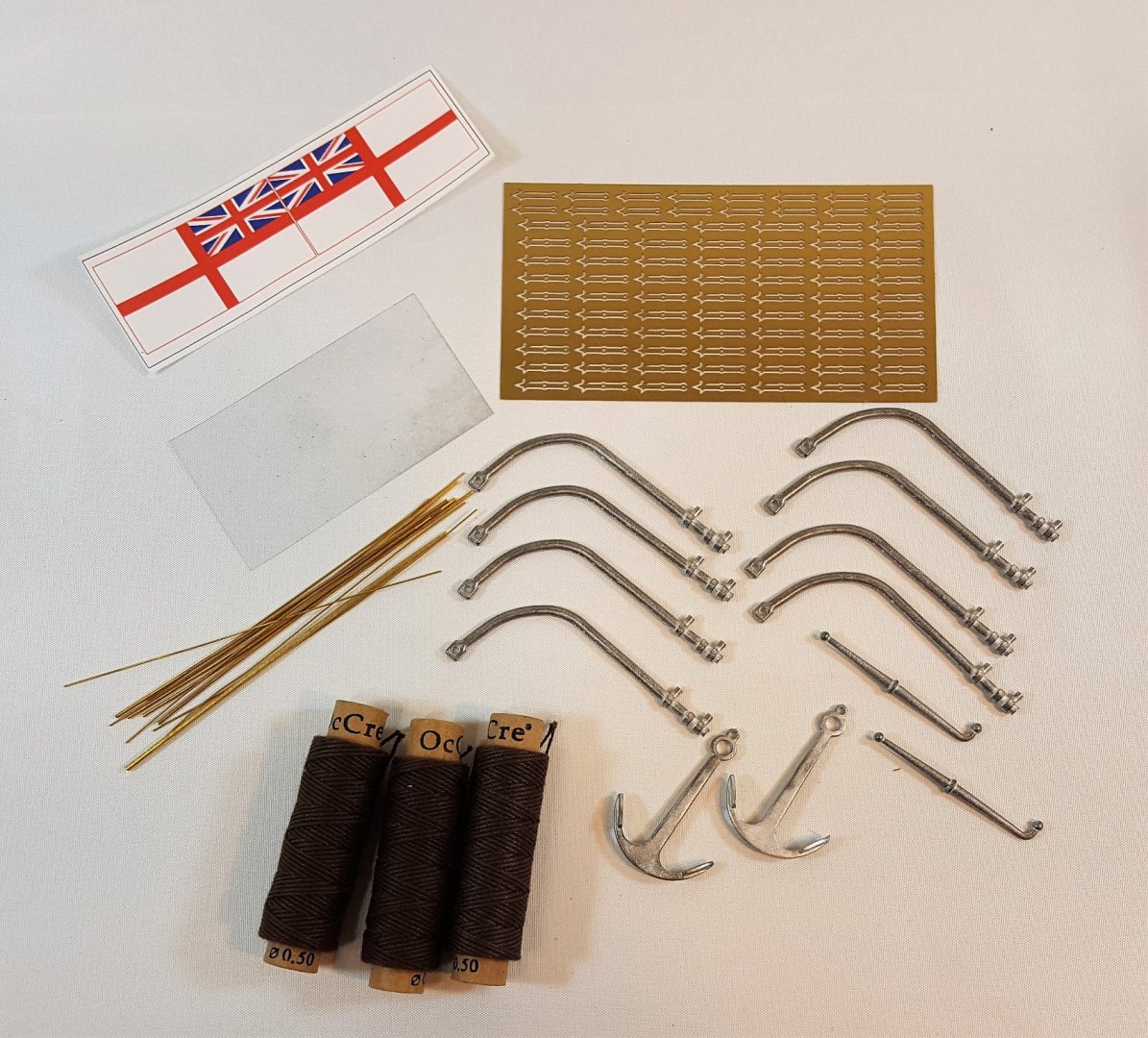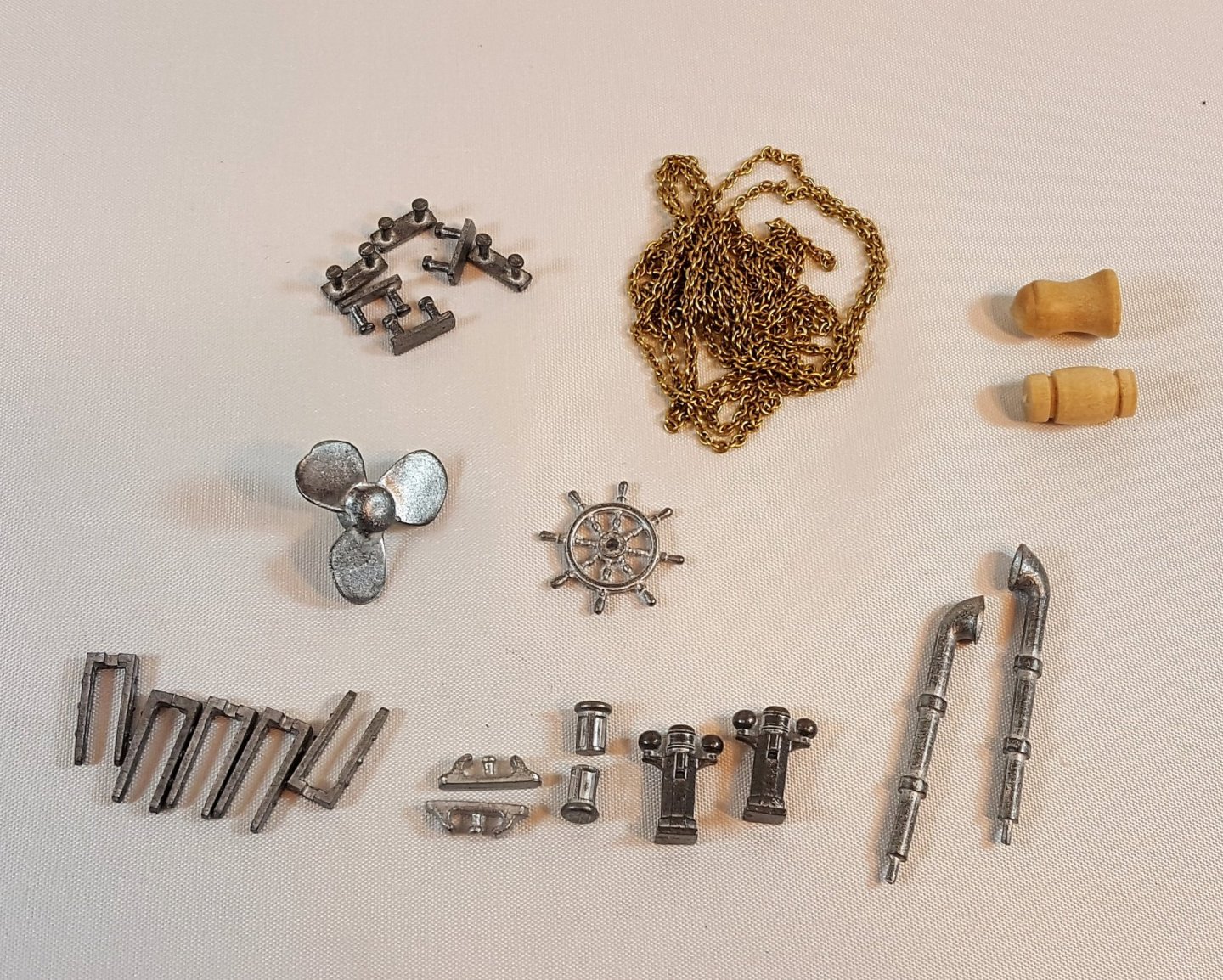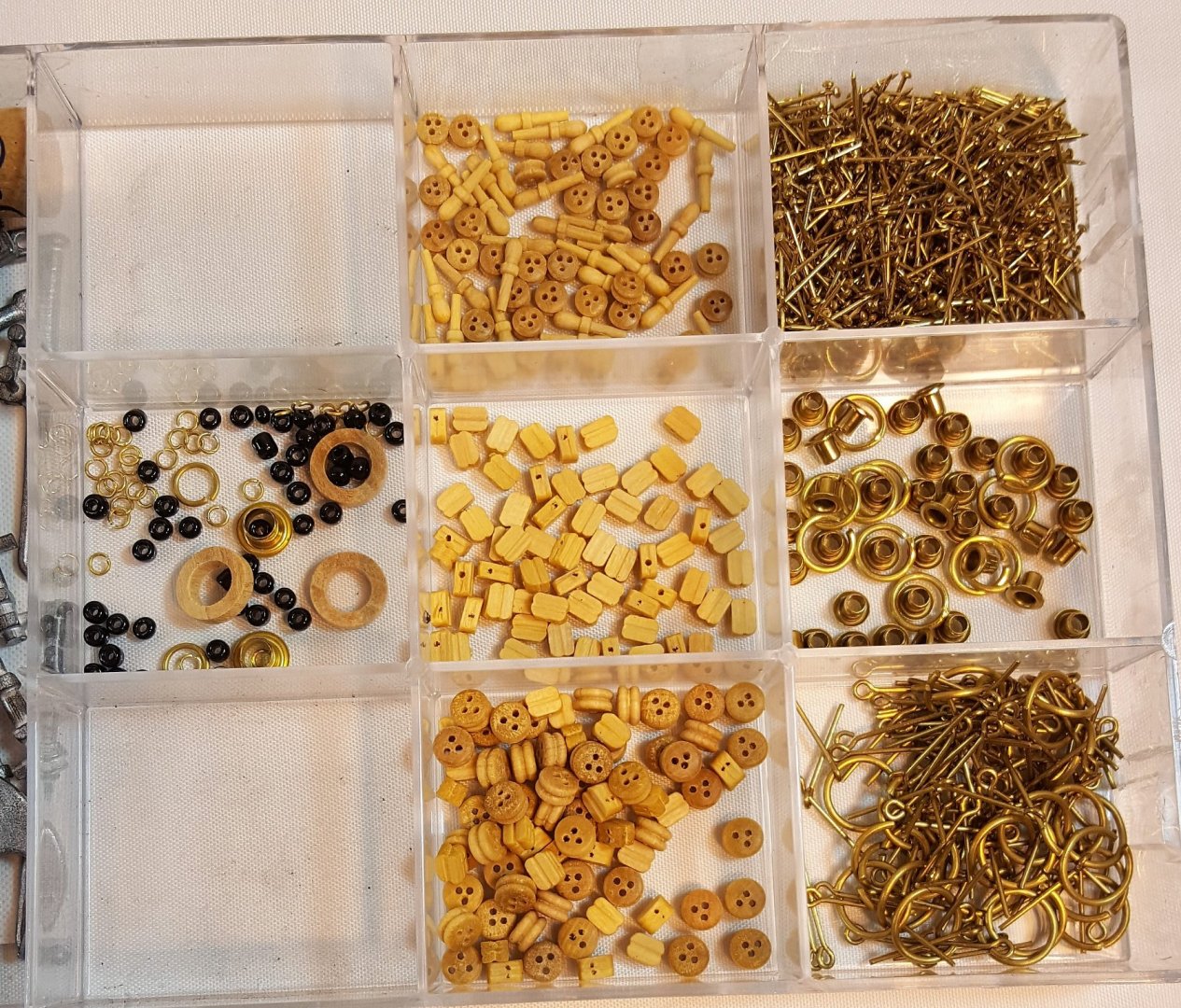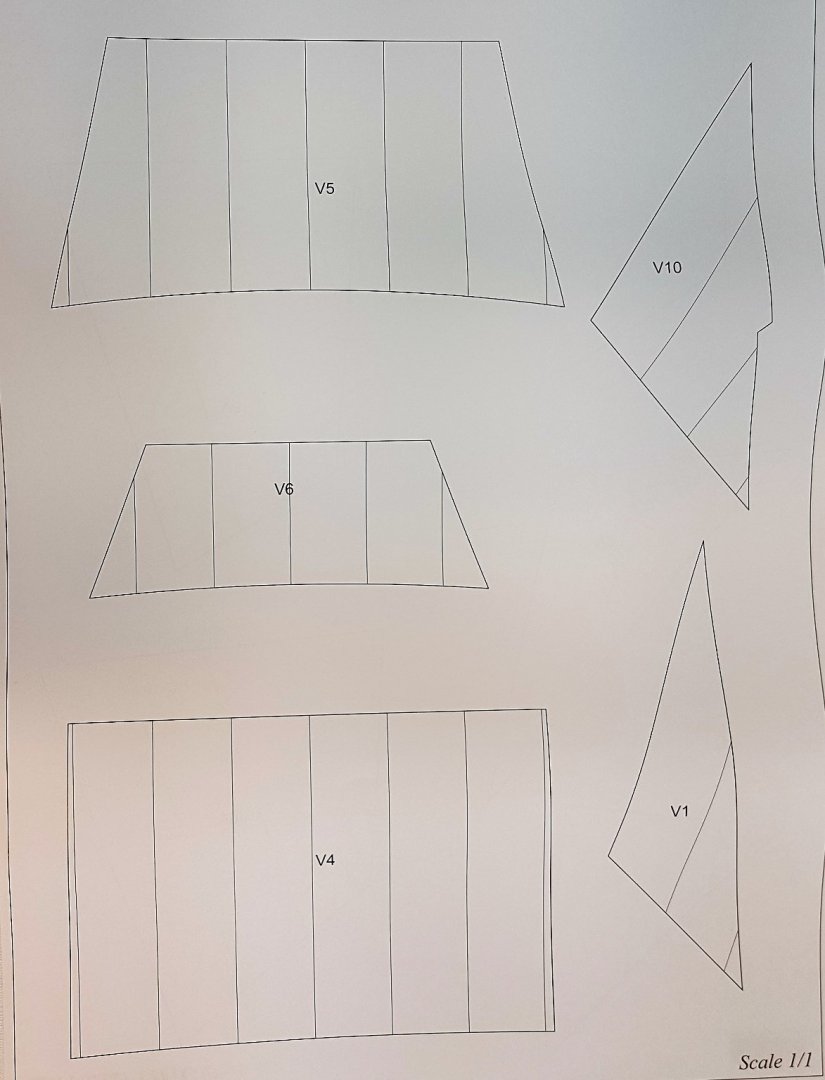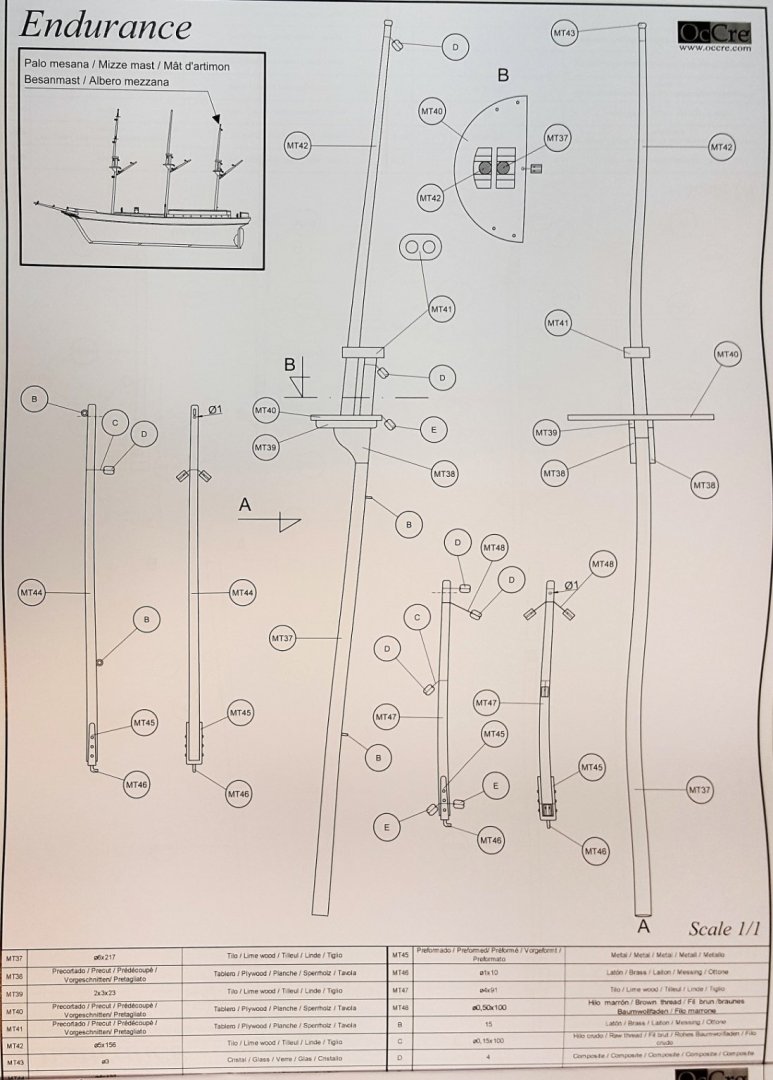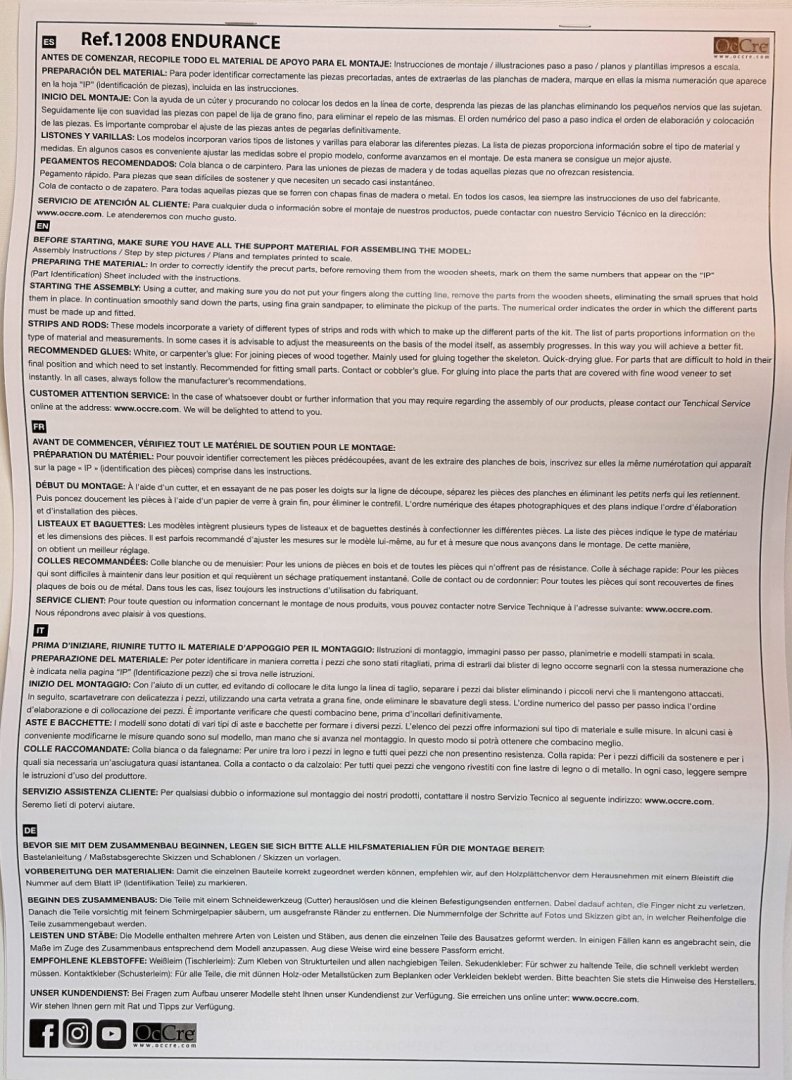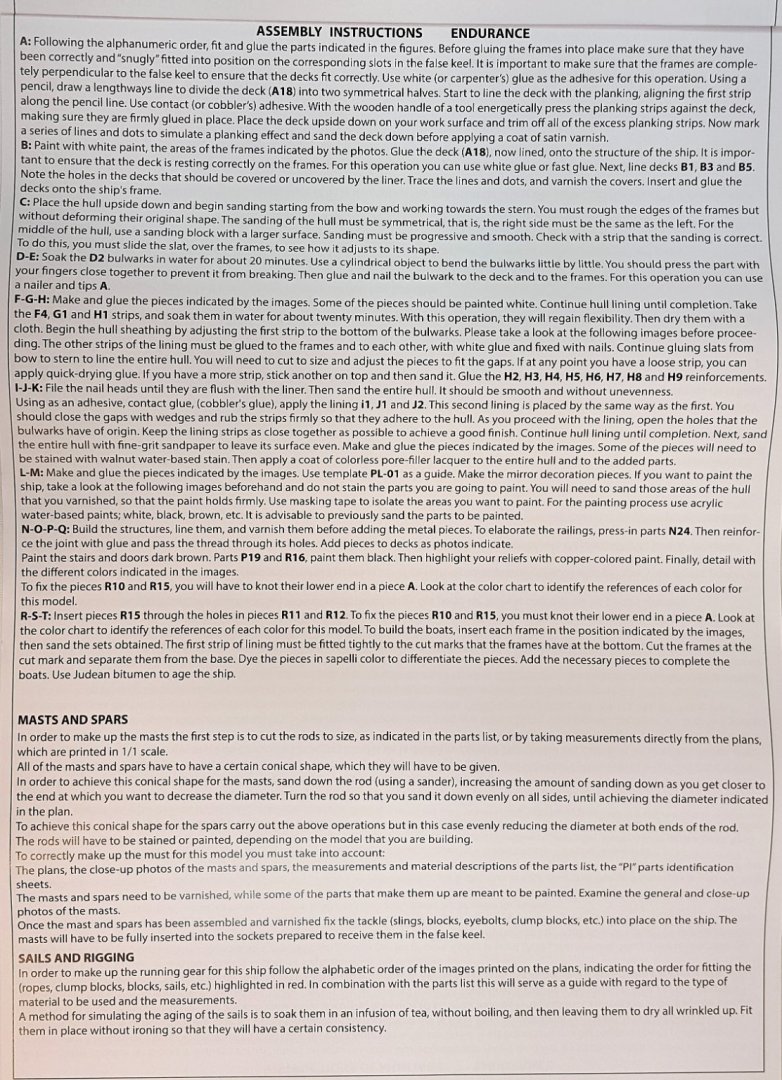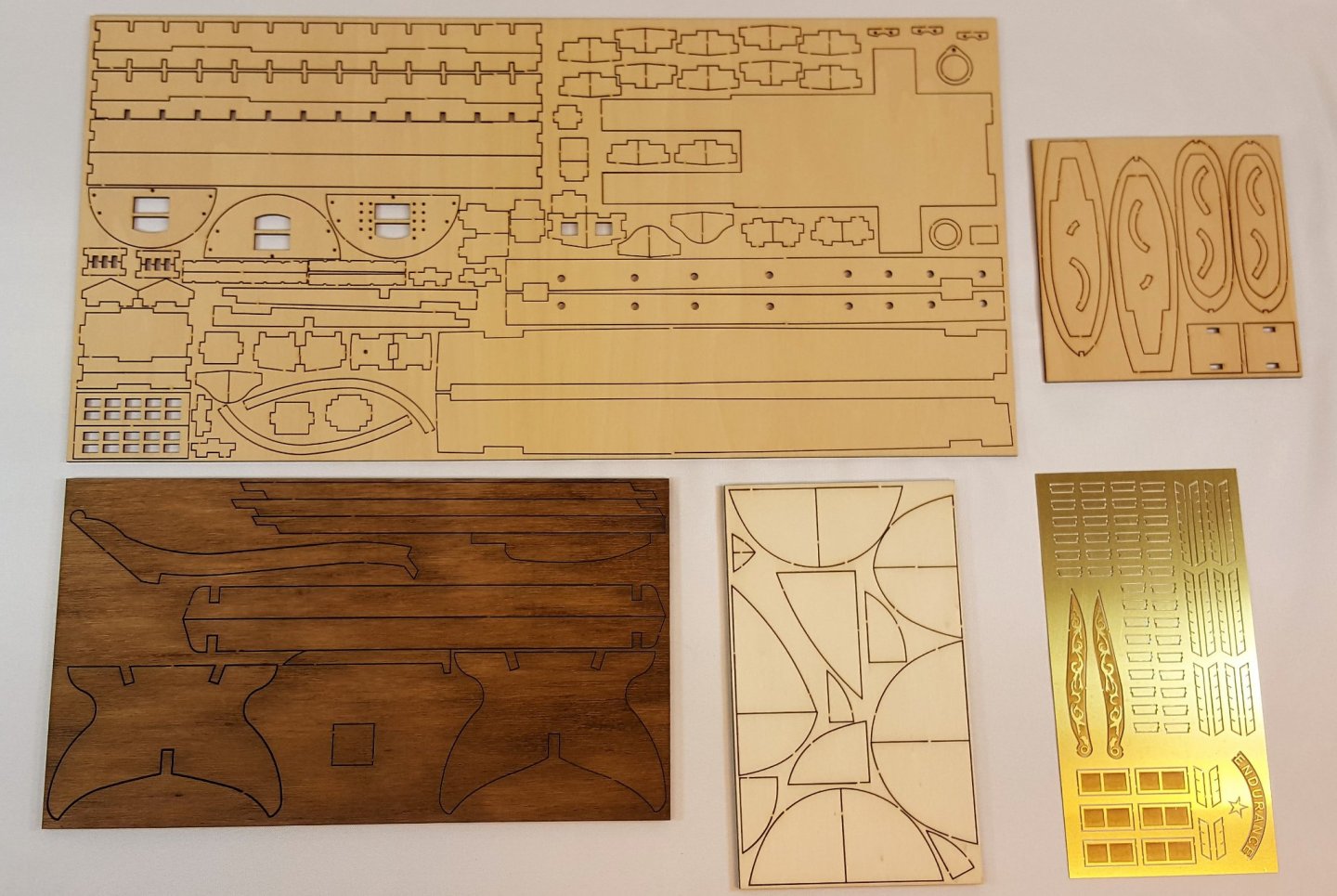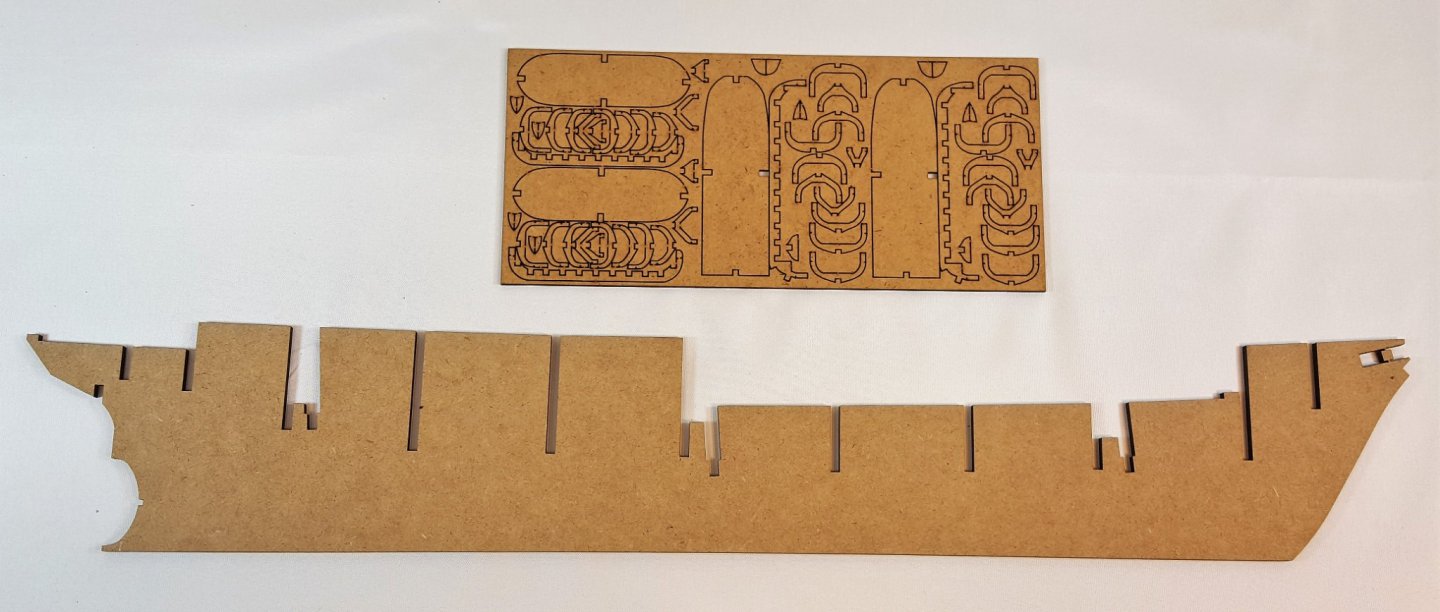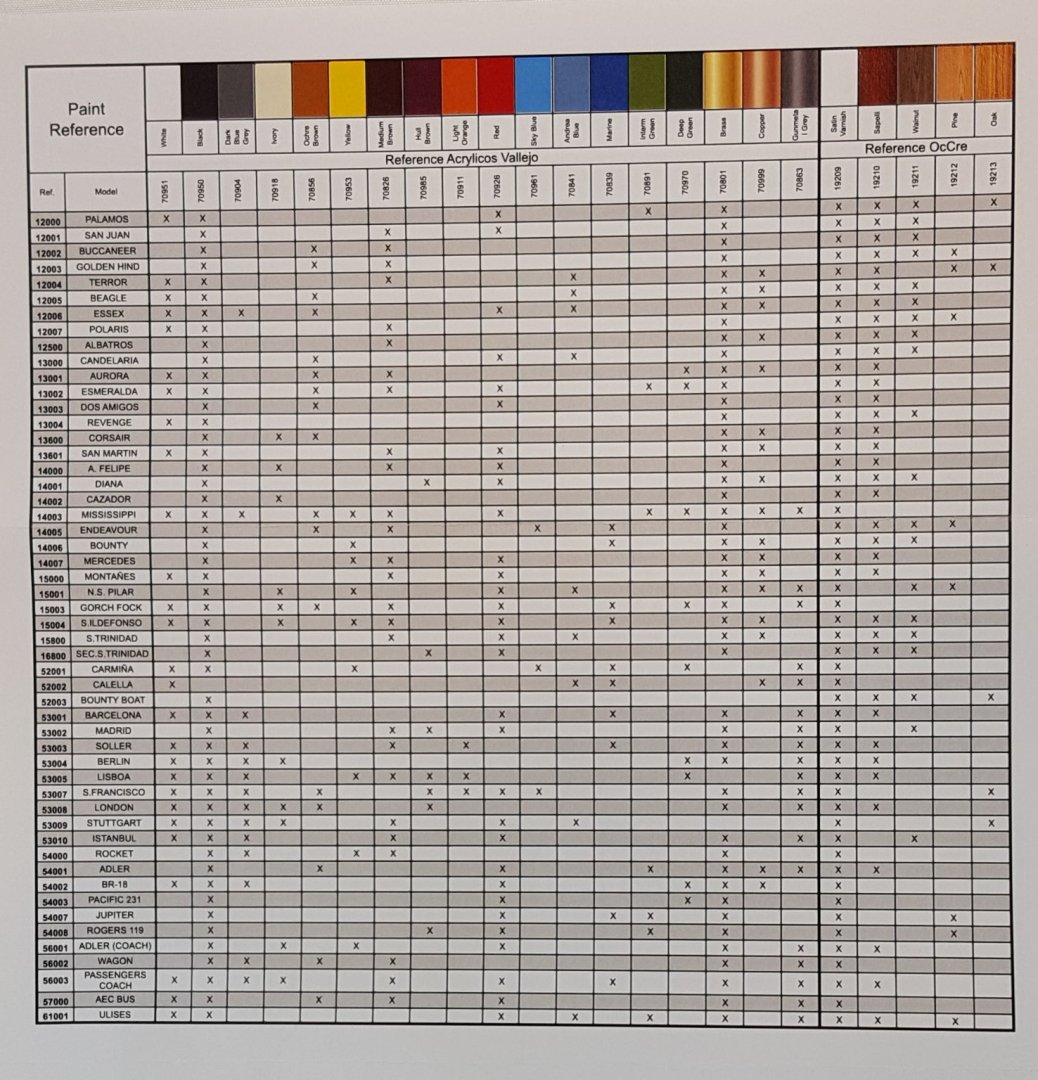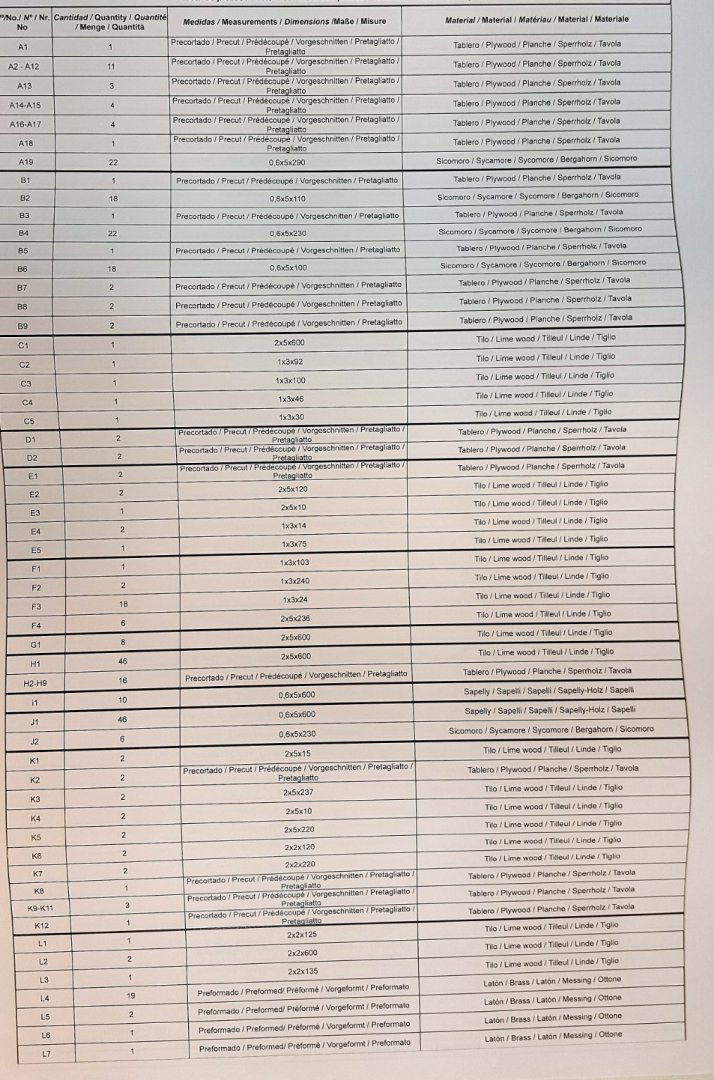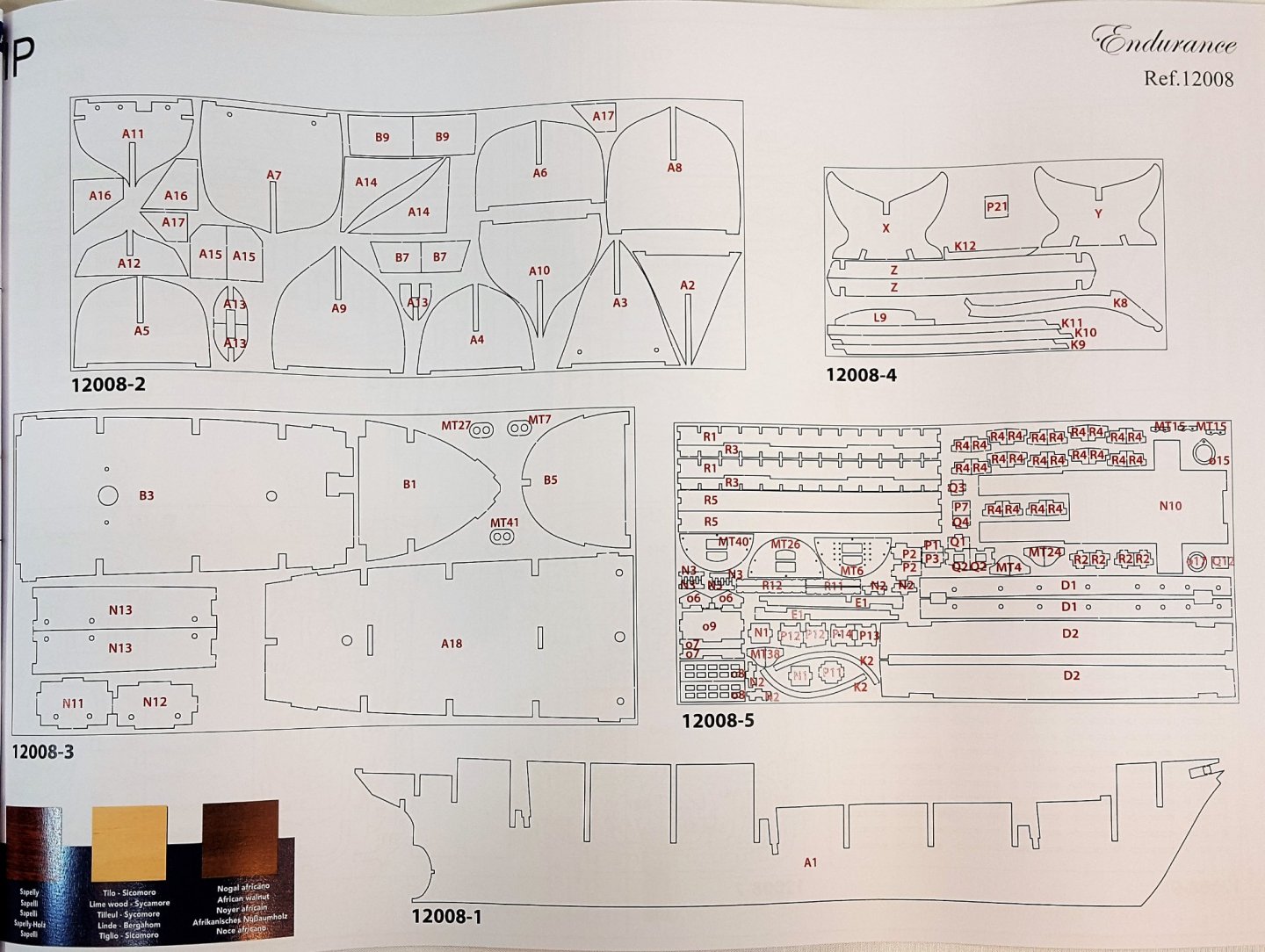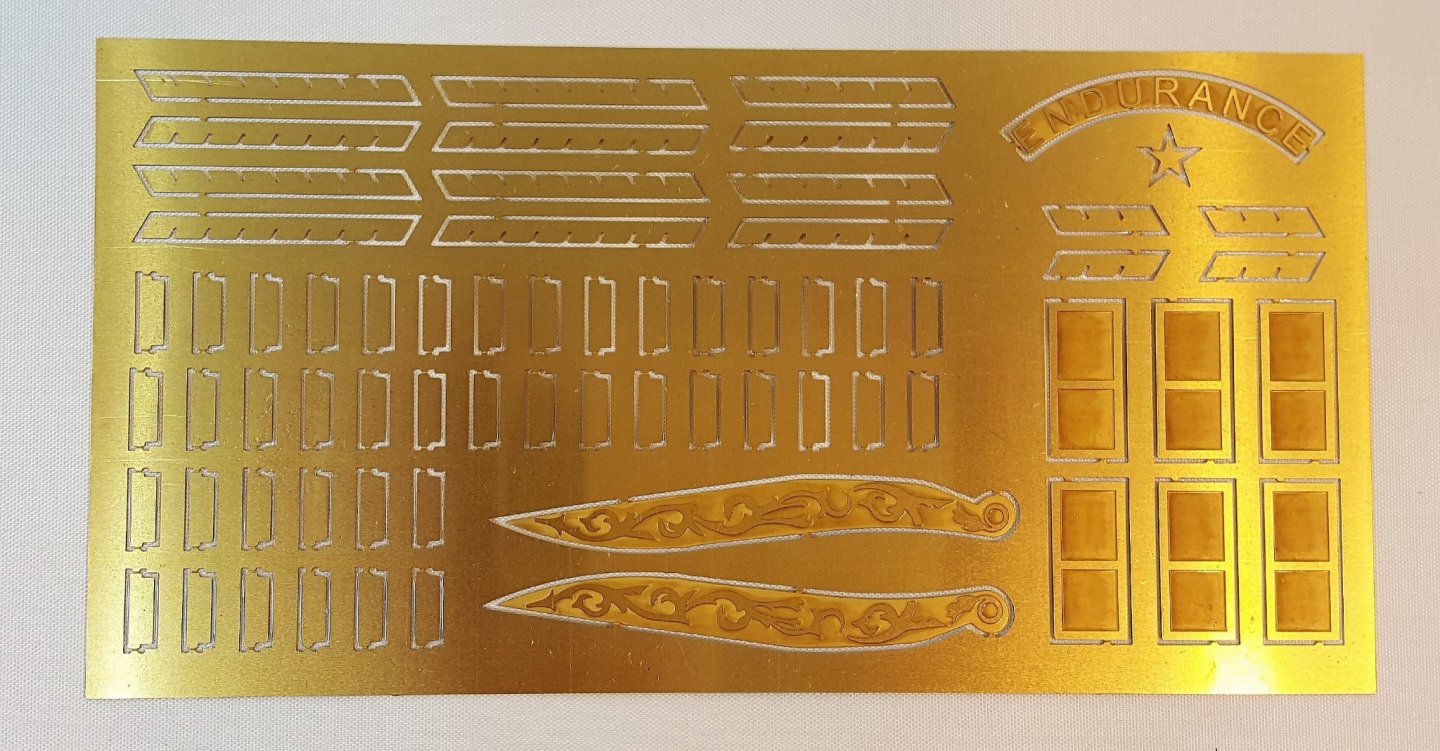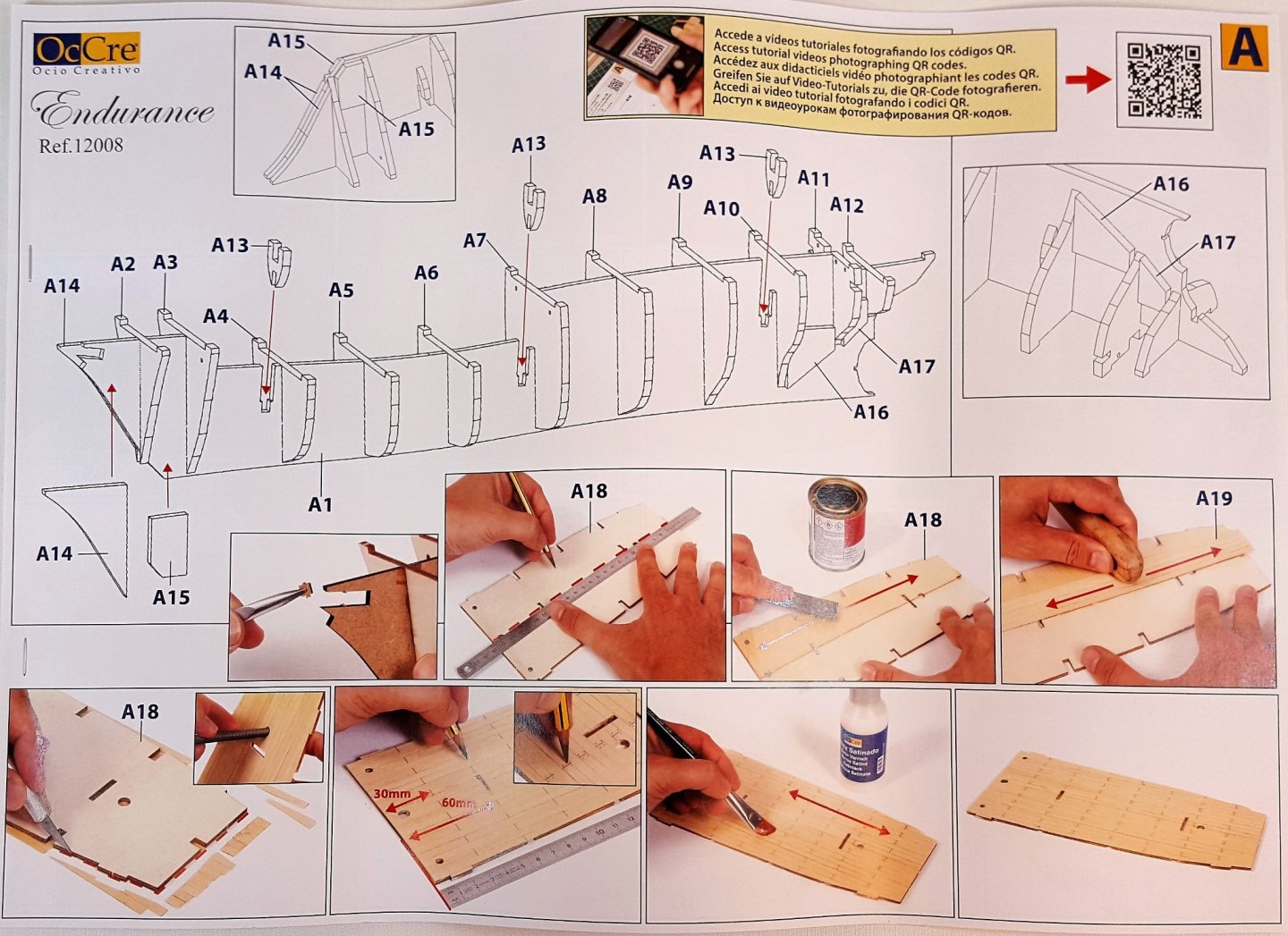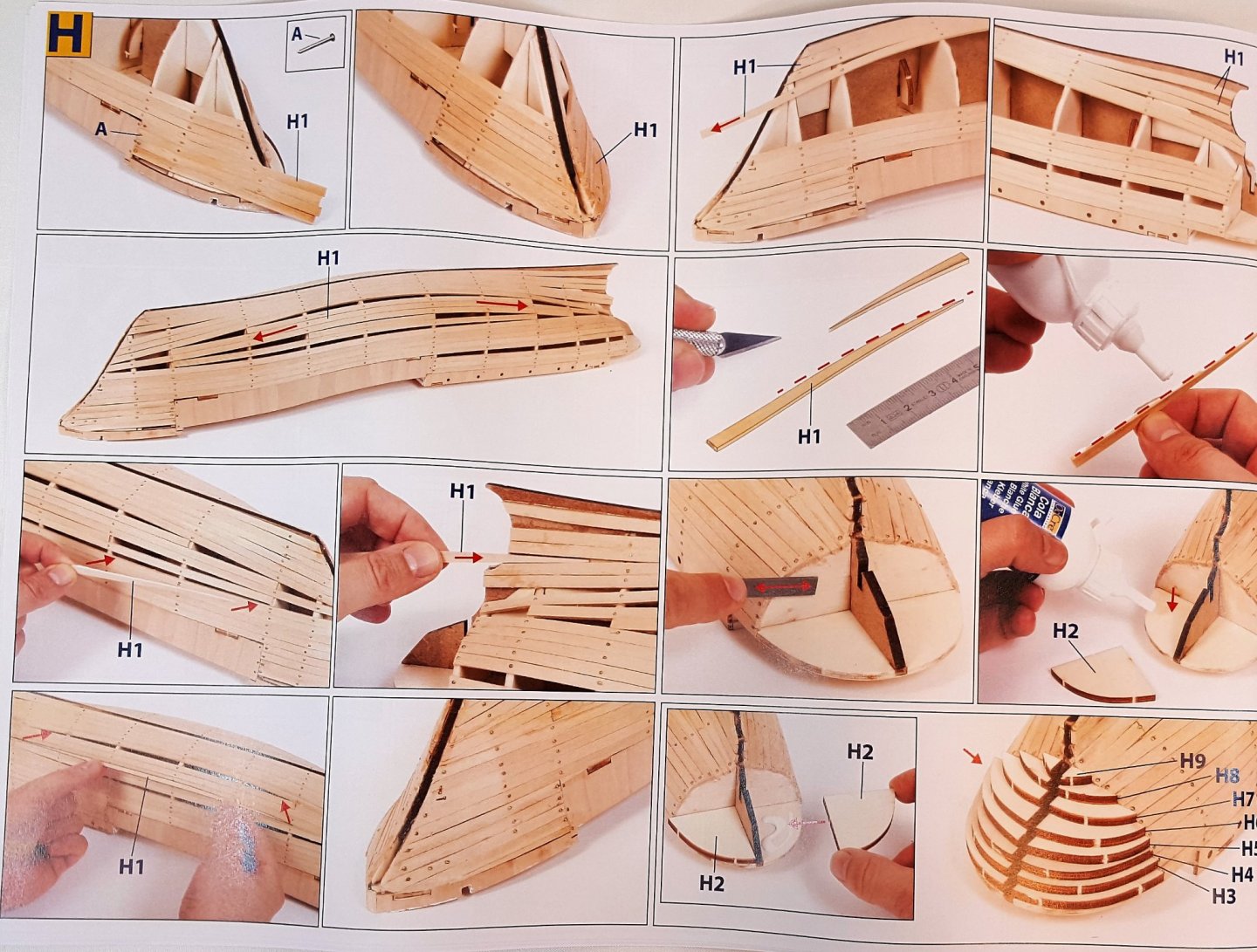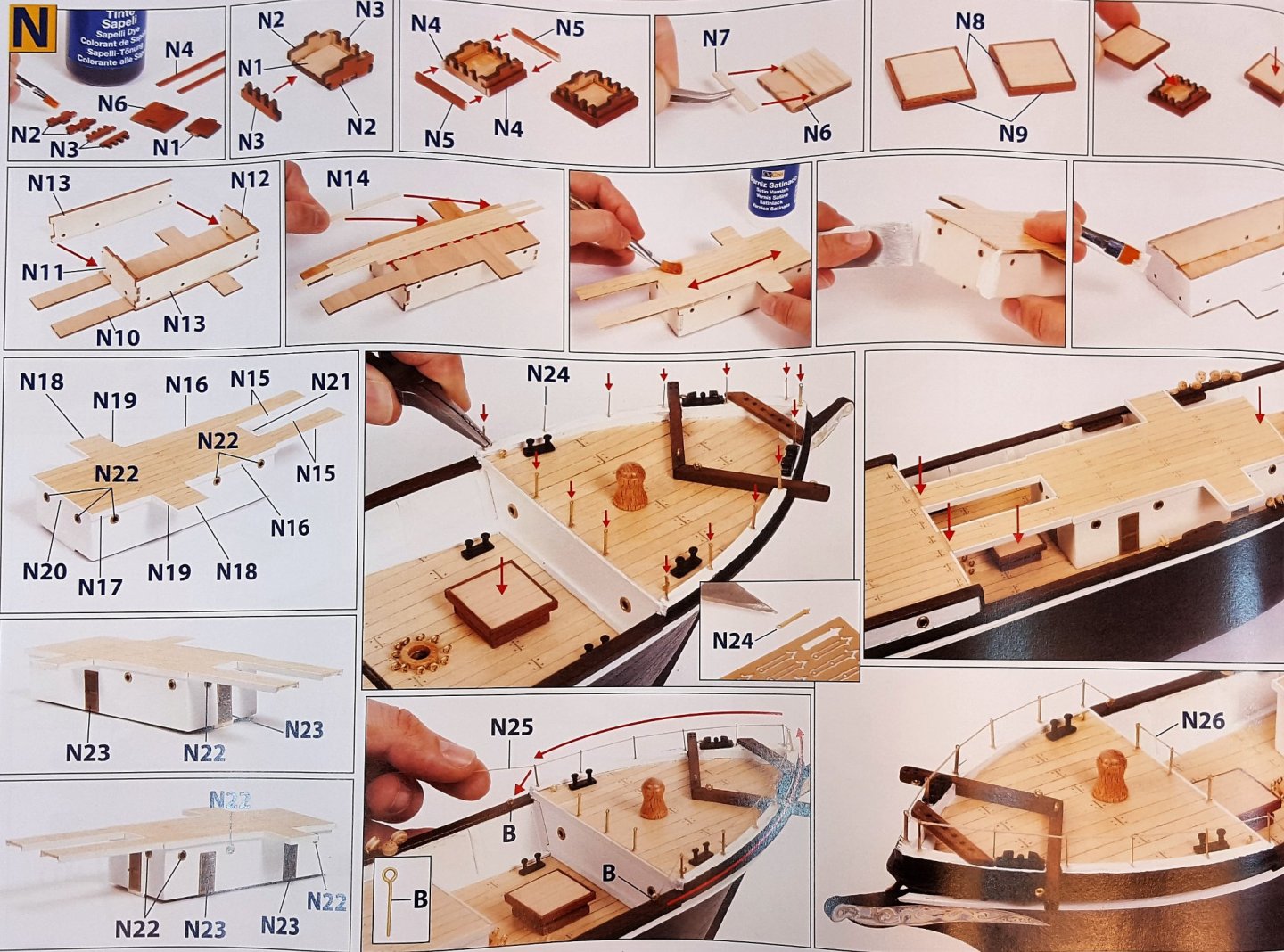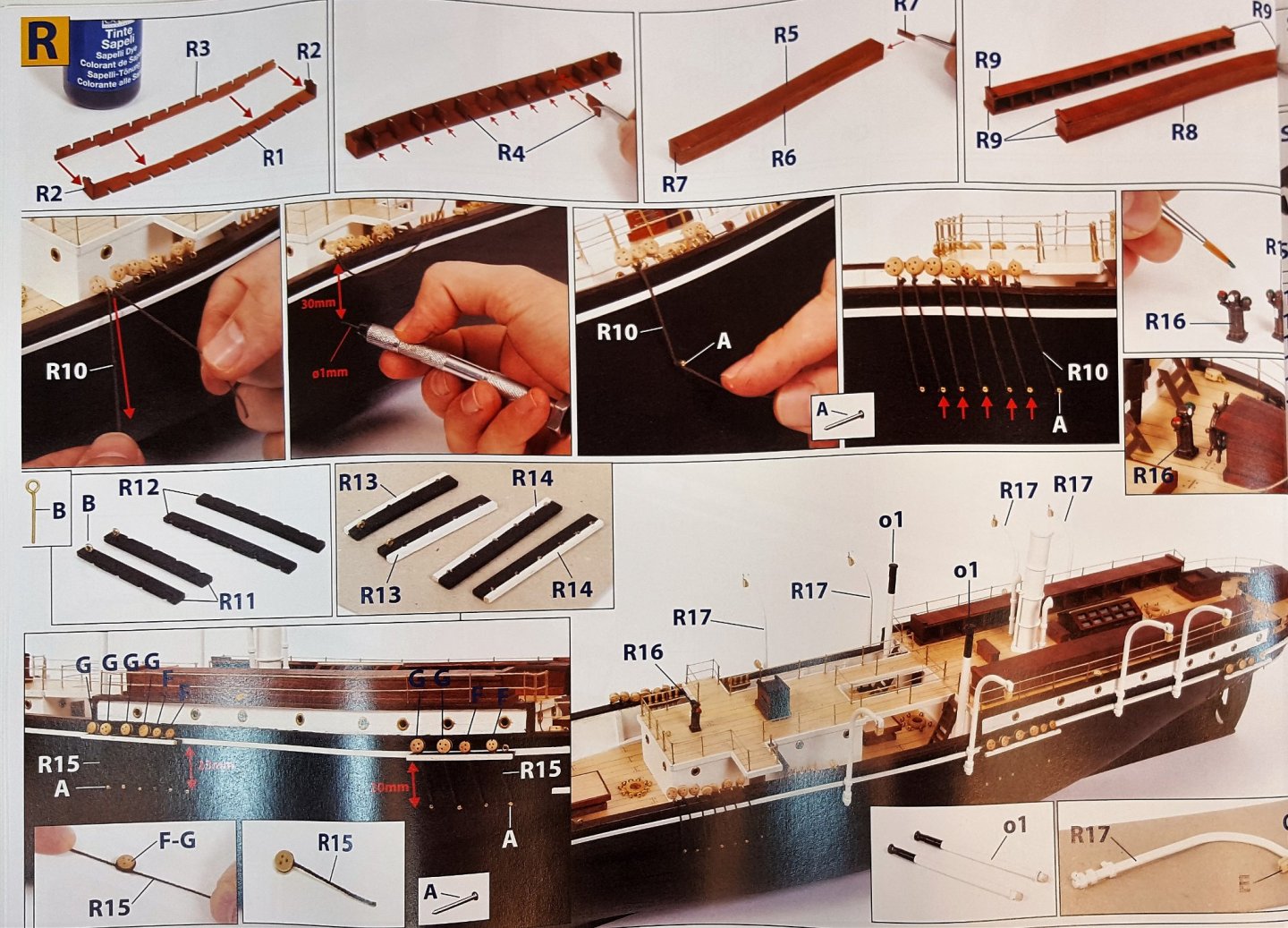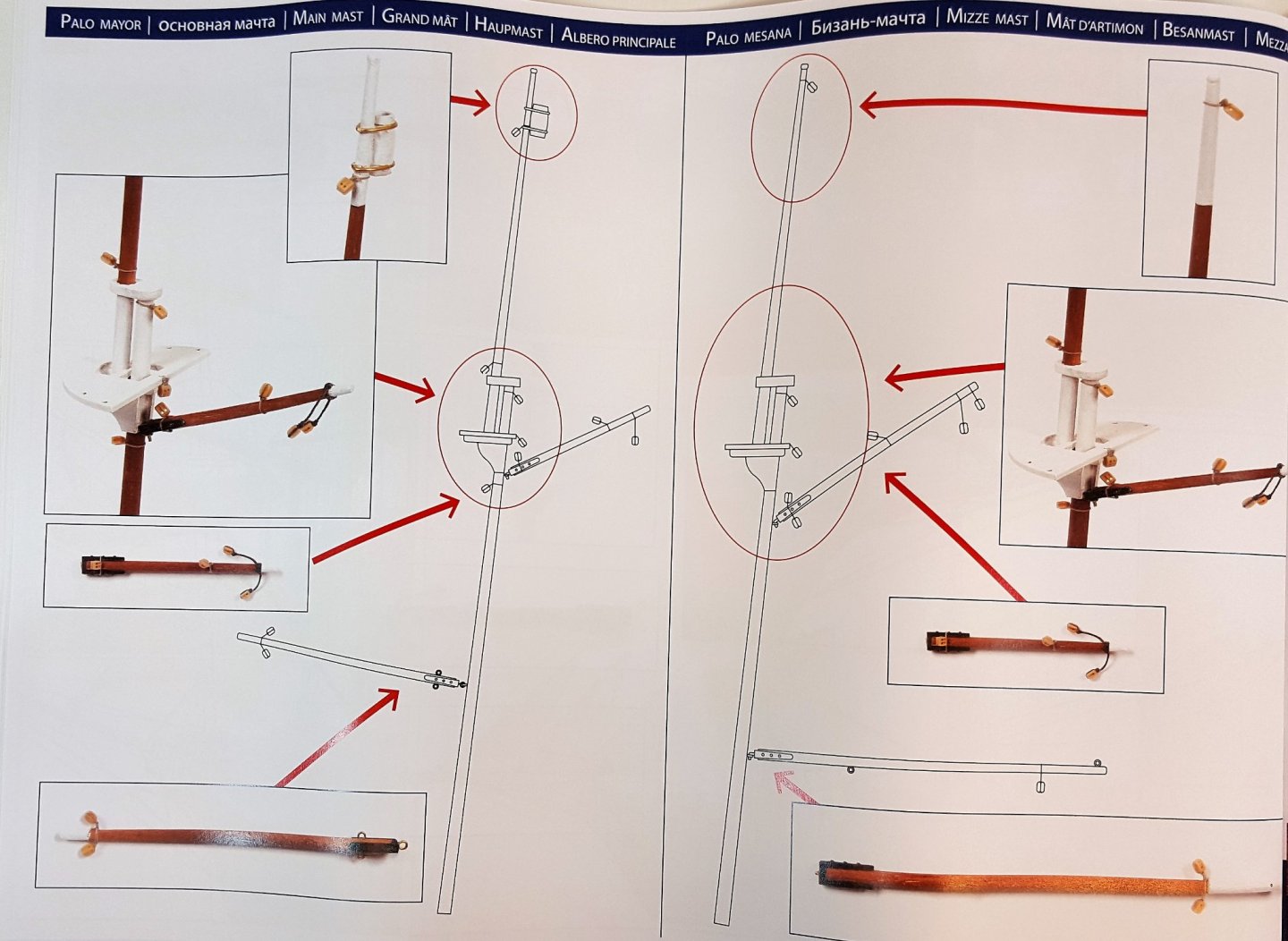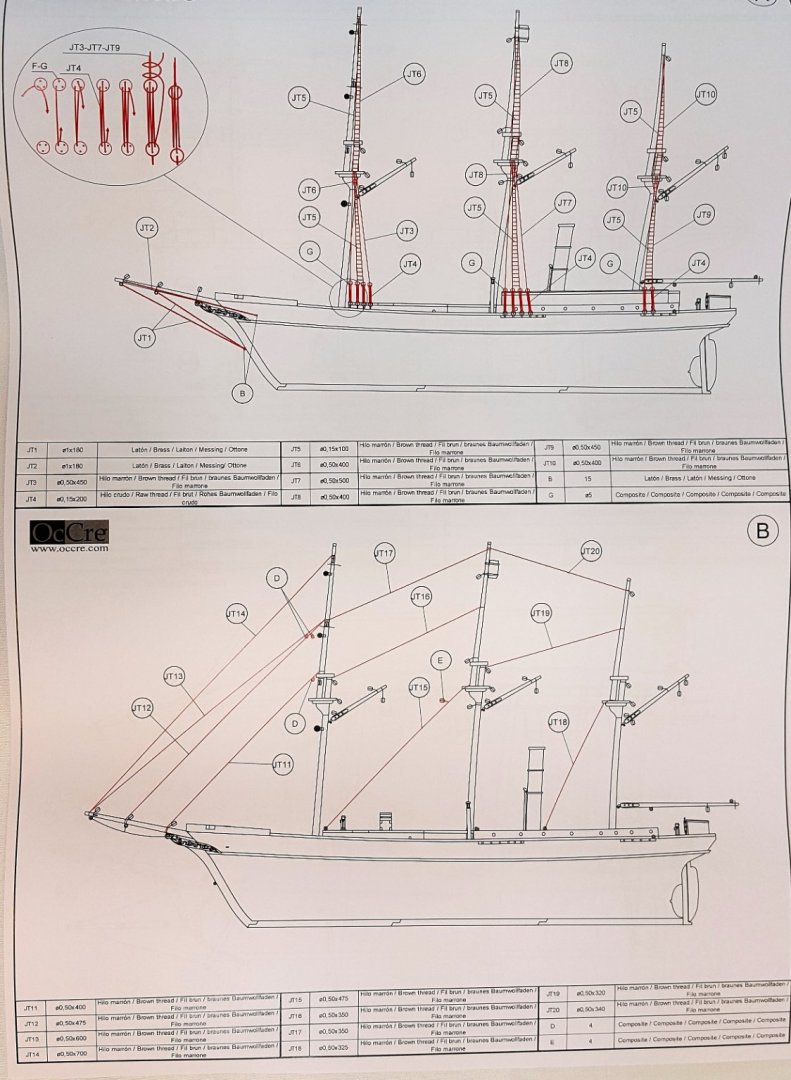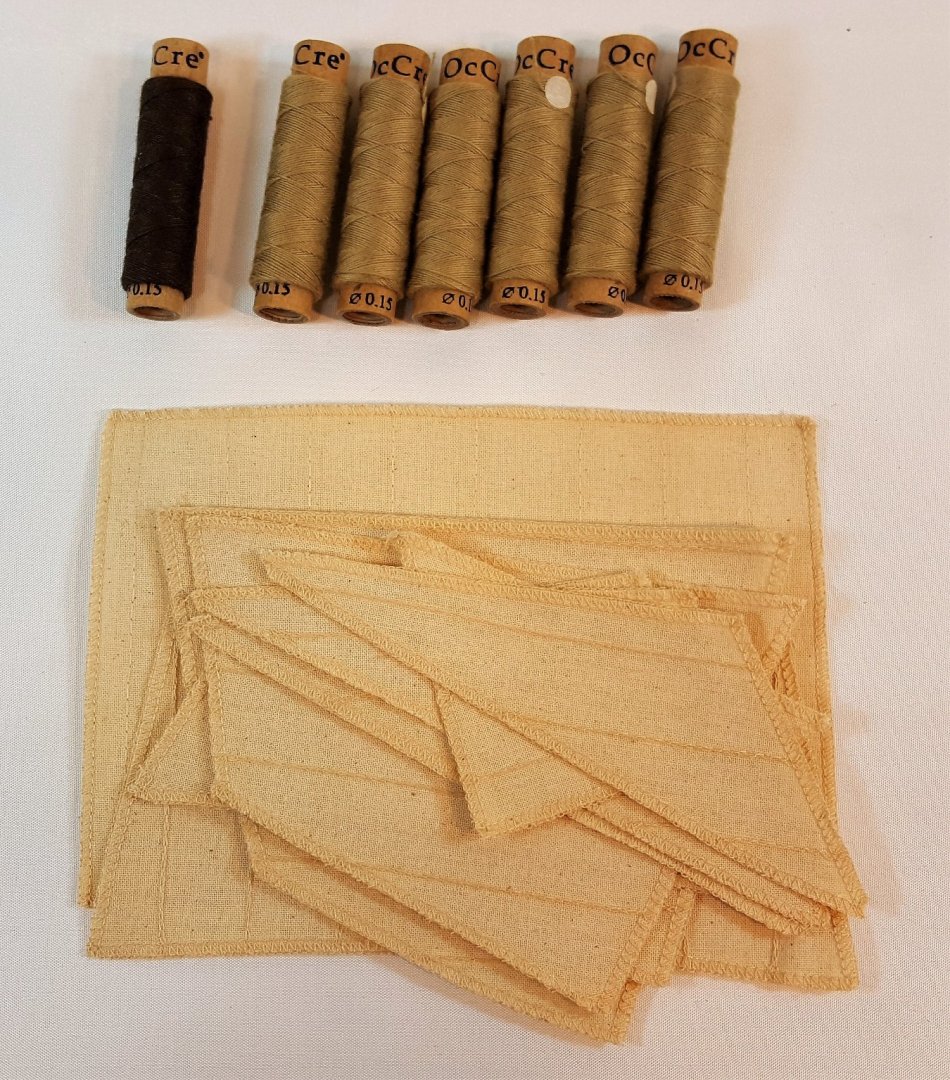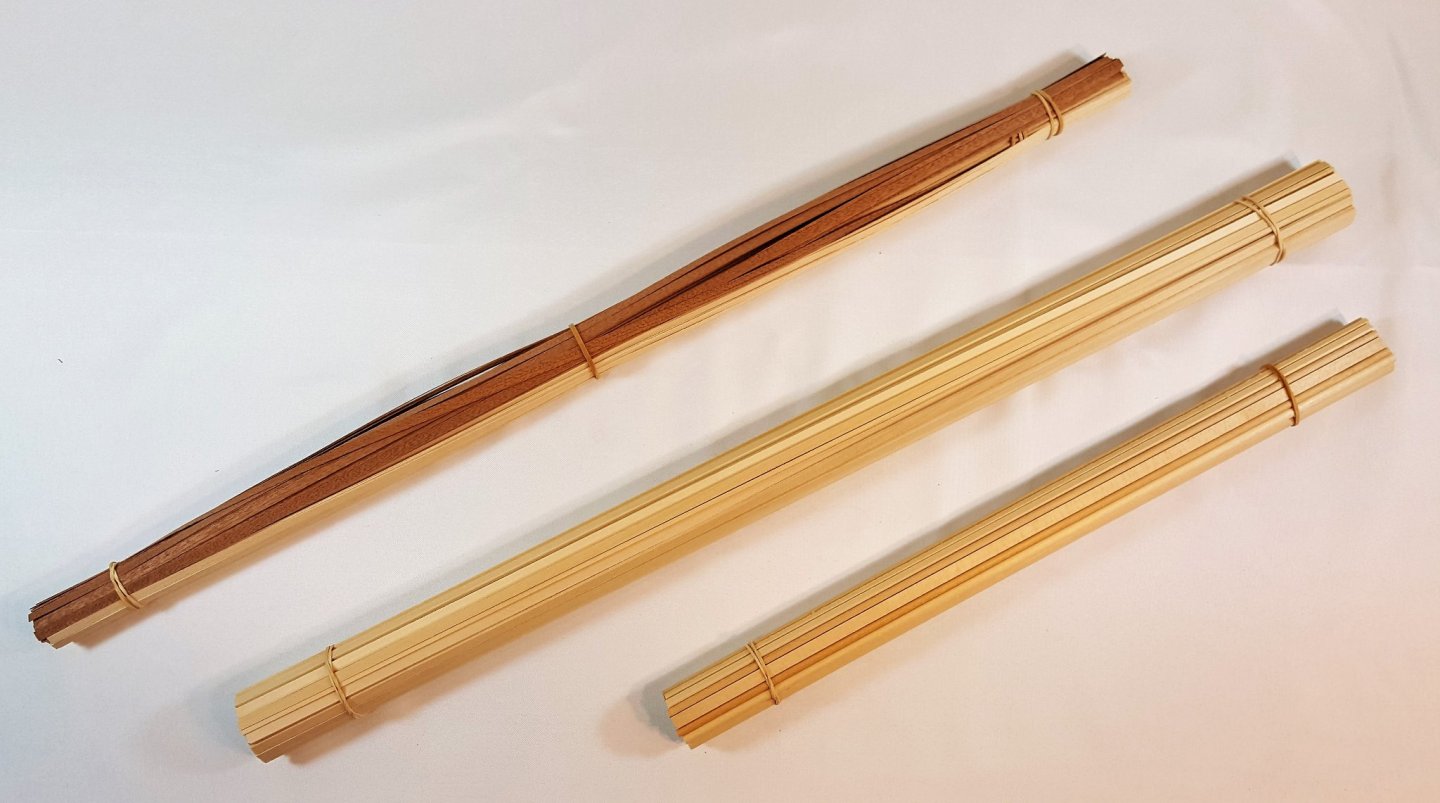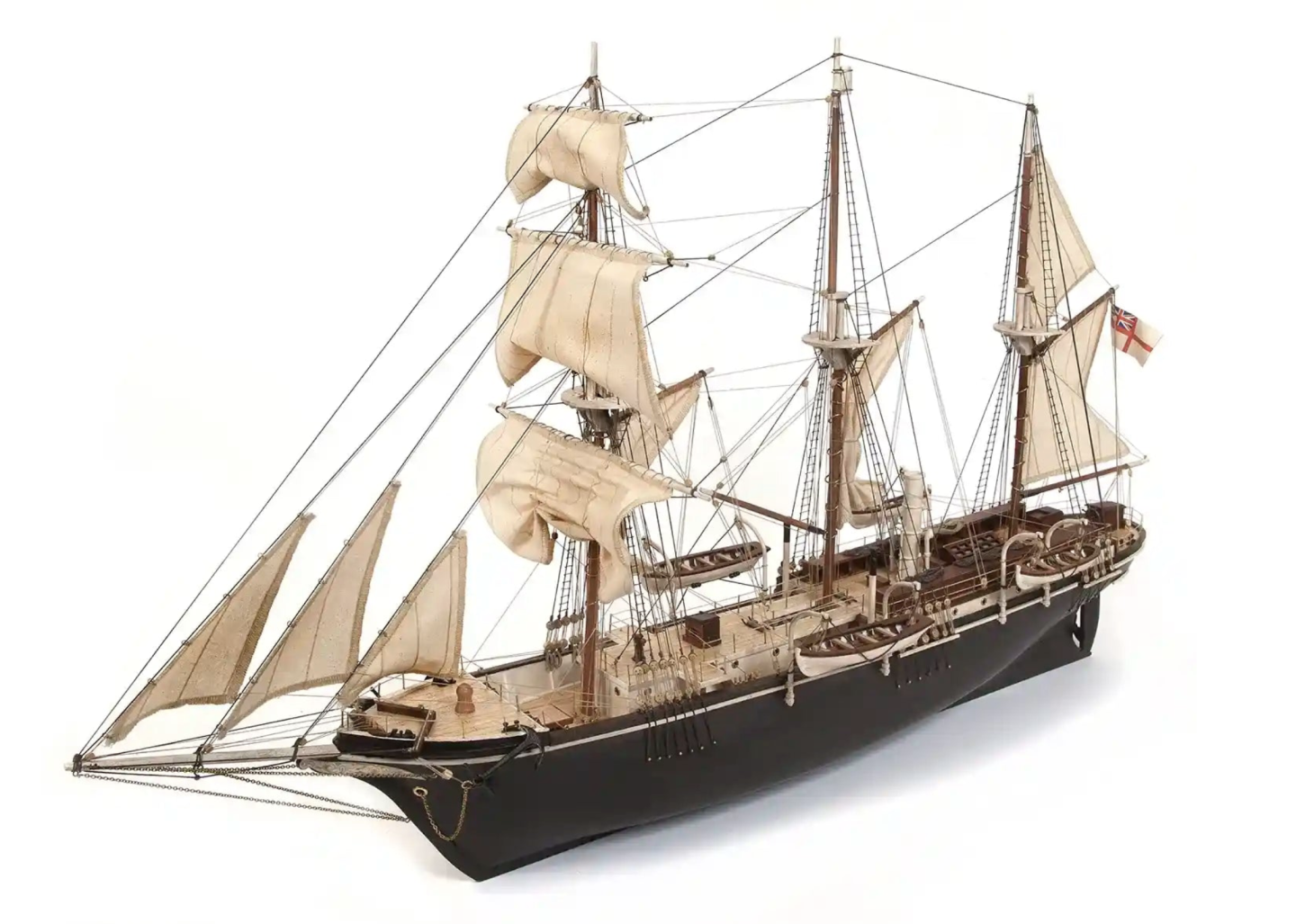-
Posts
10,350 -
Joined
-
Last visited
Content Type
Profiles
Forums
Gallery
Events
Everything posted by ccoyle
-

Proud owner of a Dremmel drill stand
ccoyle replied to DaveBaxt's topic in Modeling tools and Workshop Equipment
I have to agree with your assessment, Dave. I bought the Dremel stand years ago and quickly gave up on it. Nevertheless, I've been dragging it around on all my moves, cross-country and all. Don't ask me why. -
Annoying production schedule hiccup: The paint I ordered was damaged in transit and discarded thanks to UPS. I haven't heard yet from the shipper when (or even if) they will reship the order. I'm a little miffed, because I felt like I was on a roll and was anxious to start painting. Now it's just more waiting ...
-
They're a provider of affordable cremation services. Oh, wait -- that's Neptune Society, not Neptunia. Never mind! 😜
-
As popeye has pointed out, Dan passed away last year, but he was indeed a master of the card medium. As a card modeler myself, and having had mixed results with Halinski (all down to my abilities, not to any faults with the kits) I cannot stress enough: DO NOT start card modeling with a Halinski kit! Halinski are the 'gold standard' of card modeling, and their kits have a well-deserved reputation for detail and realism. But that detail and realism comes at a price -- Halinski kits are probably the most challenging kits on the market to assemble. When your Mk V kit arrives (which I also own a copy of), you will be dumbstruck when you see the number of parts in the kit, especially small parts. I would advise anyone starting out in card modeling to start simple -- there is a multitude of new skills to be learned, e.g. scoring, cutting, folding, rolling, etc. You don't even need to necessarily start with aircraft; the same skills are used for ships, architecture, etc. Spend some time looking around and you can even find plenty of free models (from reputable sources, of course) to build, allowing you to booger as many attempts as needed to get your skills down pat (we have a tutorial based on one such kit in our card modeling section). Then, you can try one or two models from publishers whose offerings are still nice but less complicated, e.g. Kartonowa Kolekcja. Have some fun looking around at vendor websites to get an idea of what's available in card. A few of my favorites are: Paper Shipwright WAK Orlik GPM Have fun!
-

Kit Review 1/250 Destroyer Escort USS ENGLAND (DE-635) by HMV - CARD
ccoyle replied to ccoyle's topic in REVIEWS: Model kits
Oh, dear -- I learned today that the kit's designer, Darius Lapinski, has made available a 3D-printed hull for this kit. Heart (and wallet) be still! -
I'm pretty sure that's the same wheel that was included in my ancient Corel Flying Fish kit. It wouldn't surprise me at all to learn that somebody -- maybe Corel or Amati -- is churning these out in bulk for use by other companies in the region.
- 286 replies
-
Welcome, Ken. I had a look at your drawing -- very nice! Artistic skills will come in handy during your ship modeling adventure. Cheers!
-

How can I find out how much a mode kit is worth?
ccoyle replied to Mleal's topic in New member Introductions
Best way to do that is to post pics of the kit box & its contents here, along with brand name and scale. -
I don't know diddly about marine paints and varnishes, so I went with Interlux Brightside, the one-part polyurethane topcoat recommended by CLC, Interlux Pre-Kote build-up primer, and Interlux Schooner varnish. I shopped around and found a place in Florida that sells these for a bit less than CLC and ordered today. I had my daughter look at the color options, and she happened to pick the exact two colors I was thinking about, so that was nice. I then trawled the Internet looking for boats wearing that brand and those colors, and decided I liked the blue better, thus the canoe will wear Sapphire Blue on the outside, contrasted with Seattle Gray, a nice light gray, on the inside. Here's a pic of a boat being done in Sapphire Blue. And here's one that shows kinda the look I'm going for, albeit in a different brand of paint. Now for more anxious waiting ...
-
Amati's Elizabethan galleon makes a beautiful model.
-
Yikes! I can't believe it has been over a month since I updated this thread! Of course, COVID and its aftermath ate up three of those weeks, so there's that. Anyways, I have an announcement: I ... I think I'm ready to paint. 😲 Yes, I finally got all the sanding done, inside and out. Now, it would be sweet if I actually had the paint on hand, but I don't, so the next step is to order paint, primer, and varnish. Not being too pleased with my interior finish work, I'm pretty well set on painting the interior. My plan is to go with either a dark green or dark blue exterior and a light gray interior (I intend to fish from my canoe, so I think gray will cut down on the glare); the rails and decks will get varnished. And that's it for now.
-
I have no opinion on the scale (1/70). The finished model is 754 mm (roughly 30"), so it's a fairly large model. As I described in the review, the wood elements are very good, but I would say that the fittings are average. Were I to build it, I would definitely want to upgrade some fittings. But, as the prototype demonstrates, a straightforward out-of-box build can produce a striking model.
-
Don't look for it anytime soon!
-
Review has been added!
-
If you have completed the second planking, then you have already made it past the point where many beginners give up on such a large project, so stick with it!
-

A big generalization
ccoyle replied to Don Case's topic in Building, Framing, Planking and plating a ships hull and deck
If you are referring specifically to the age of sail, then your generalization about generalization is largely correct. During most of that era, progress in ship design was slow and took place in tiny steps, largely limited by the technology available at the time. Countries were also quick to copy whatever worked from other countries. Thus, for example, all frigates of the late 18th century had very similar lines, carried similar armament, and had very similar fancy work. Why? 'Cause it worked. Once steam propulsion came on the scene, the evolution of ship design was much more rapid. Consider that ships-of-the line changed mainly in size only for well over 200 years, but less than 100 years elapsed between Robert Fulton's primitive North River Steamboat and Jacky Fisher's Dreadnought -- pretty incredible. -
ENDURANCE by OcCre 1/70 scale MSRP €159.95 Image courtesy of OcCre All images by author except where noted. Sir Ernest Shackleton’s Endurance scarcely needs an introduction to nautical history enthusiasts. Launched in 1912, two years later she set sail for Antarctica with Shackleton and 27 others aboard for what was intended to be a transcontinental crossing of Antarctica via the South Pole. Instead, Endurance became stuck in pack ice in January of 1915 and eventually sank the following November. In April of 1916, Shackleton and several crew members set off for South Georgia in one of Endurance’s boats. They reached the island two weeks later and crossed a mountain range to reach the island’s whaling station. A rescue party was sent to fetch Shackleton’s remaining crew. Miraculously, everyone survived. https://upload.wikimedia.org/wikipedia/en/7/7f/Endurance3.jpg Endurance trapped in the ice. Photo courtesy of Wikipedia (public domain). Over the years, this forum has seen numerous folks pine for a kit of Endurance, and now OcCre has responded. The kit is in 1/70 scale and carries an MSRP of €159.95, which in today’s market has to be considered a bargain. I was very interested in doing this review because of the striking look of the prototype model, the fame of the subject, and the fact that the ship is not a man-of-war (hence no tedious cannon to rig) and carries a barkentine rig, which is one of my favorites. Let’s dive in, shall we? First Impressions Endurance was shipped by FedEx Economy and made the trip from Spain to South Carolina in one week. I was a bit alarmed to see that the exterior shipping box had one corner completely stove in – it had obviously been dropped from some height and landed directly on that corner. Opening the box revealed that the kit had been shipped sans packing material, which is not the greatest way to do business, IMO. However, the kit box was not damaged during transit, despite the smashed corner. I’ve never built an OcCre kit before, nor even seen one in person, but I liked the look of the kit box, with a nice shot of the prototype model and a window through which one can see the fittings box. On closer inspection, I discovered that the “box art” is actually a printed sheet that is glued to a generic box cover. I suspect that this is why OcCre kits aren’t built to any standard scale; like the old “yellow box” kits from Model Shipways, OcCre kits are probably built to whatever scale will allow the kit to fit into a standard-sized box – 1/70 scale in this case. Opening the box revealed that although some of the contents could slide around a bit, they had been taped, shrink-wrapped, and compartmentalized in such a way that any potential for damage was really rather slight. Paper Stuff: Plans and Instructions Someone unfamiliar with OcCre might initially be alarmed upon reading the instructions – there essentially aren’t any, at least not in written form. Apart from a single paragraph about what to do before starting assembly, the written instructions consist of one sheet (in a choice of languages). (Apologies for the purplish tint -- I'm limited by the capabilities of my photography equipment.) But have no fear! What the kit lacks in written instructions, it more than makes up for in photo instructions. And in addition, OcCre provides a series of online video tutorials for the kit, which you can preview here. Let’s look at some examples from the photo instructions. BTW, the instructions, as well as the drawings, are bound with only a couple of staples. It’s not high-quality binding, but it does allow everything to easily be laid flat by simply removing the staples. Here you can see that the photo instructions are very detailed; no step is left uncovered. You can also see that the construction method is typical plank-on-bulkhead, but there are some nice touches. The deck is planked in such a way that small slots are left on the underside; these fit over the ears on each bulkhead, so that the entire structure is strengthened and locked in place. The directions for planking present a Mastini-like simplified method, which can be forgiven considering that the hull is intended to be painted. Of note on this sheet is the kit’s method for dealing with the ship’s round stern; it is built up bread-and-butter style and sanded to the correct shape. Apart from decking and planking, nearly all of the ship’s upper works are built from laser-cut parts, rather like a large jigsaw puzzle. I believe that this, along with the simple rig and lack of armament, makes the kit doable for an intermediate builder. A last shot of the hull instructions, mainly to show the construction of the chainplates, which, surprisingly, are made from brown rigging cord. Drawings The kit includes a complete set of 1:1 masting and spar drawings, as well as a 1:1 set of sail drawings. The instructions for rigging consist of a separate set of drawings. Fine points of mast and spar construction are covered, with different drawings depicting standing rigging, running rigging, and belaying plan. Finally, the paper bits include a parts list, a key to the parts billets, and a color code for use with Vallejo paints and OcCre stains. Parts The various parts billets come in a shrink-wrapped bundle and consist of parts cut from walnut, plywood, or MDF. All of the billets arrived perfectly flat, the wood is of good quality, and the laser-cutting is very well done, with fine, sharp lines and minimal reverse-side charring. The walnut sheet includes parts for a display cradle. The shrink-wrapped bundle includes an etched brass sheet that includes ladders, recessed door panels, trailboards, and ship’s name. Two bundles of good-quality strip wood and one of strip wood and dowels are included; the strips are nicely dimensioned and free of fuzzy edges, and the dowels are straight. Fittings A single, compartmented plastic box contains the fittings. The box was taped to prevent its contents from spilling during shipment. The largest compartment contains a fret of PE brass parts, three spools of 0.50 mm brown cord, various diameters of brass wire, a flag, a sheet of acetate for glazing windows, and cast metal davits, anchors, and stocks. The castings are free of flash. Other wood or metal fittings include cast metal bollards, fairleads, cowl vents, rudder hardware, binnacles, ship’s wheel, propeller, wood and metal capstan and windlass parts, and brass chain. Again, the castings are of good quality. The rest of the fittings box is filled with garden-variety wood and metal parts: blocks, deadeyes, mast hoops, belaying pins, eyebolts, nails, etc. Finally, a sealed envelope contains the remaining seven spools of rigging cord (one brown, six tan), which I was surprised to discover were all of the same diameter (0.15 mm), and a full suit of pre-sewn sails. The sails have the usual sort of heavy seam stitching typically found on such items. I don’t particularly like them and would probably opt to replace them, but for someone not inclined to put in that sort of effort, they will certainly suffice. Overall Impressions The new OcCre Endurance is not what one would call a great kit, but it is by no means a bad kit either. OcCre have economized here and there, as evidenced by such things as off-the-shelf fittings, providing only two diameters of rigging cord, and supplying less-than-convincing pre-sewn sails. Cost-cutting measures such as these succeed in making the kit affordable -- after all, top-end kits usually fetch top dollar – or Euro – don’t they? In other respects the kit is quite good, e.g. the thorough photo instructions, good quality wood, and excellent laser cutting. As I said earlier, I believe this kit can be built by an intermediate builder, and it will undoubtedly produce a nice-looking model right out of the box. However, with a bit of extra research and some kit-bashing, I have no doubt that the kit could form the basis for quite an excellent model. For the price and for the generally good quality (not to mention the unique subject), if not for the level of detail, the OcCre Endurance can be recommended to any interested builder. Thanks go to OcCre for sending out this review example. Endurance may be purchased directly from OcCre or from one of their regional distributors.
-
As far as I know, it does (the box carries both the Disney and POTC logos). The only others I know of are the kits from Revell and Hachette ... and Legos, of course. All of the Chinese kits, e.g. ZHL, are unlicensed and therefore in violation of most everyone's IP laws (including Chinese IP law).
-

Ships vs Boats
ccoyle replied to Mike from Aus's topic in Using the MSW forum - **NO MODELING CONTENT IN THIS SUB-FORUM**
Yes! Boats are welcome. If you look through the build logs, you will see many examples of smallcraft.
About us
Modelshipworld - Advancing Ship Modeling through Research
SSL Secured
Your security is important for us so this Website is SSL-Secured
NRG Mailing Address
Nautical Research Guild
237 South Lincoln Street
Westmont IL, 60559-1917
Model Ship World ® and the MSW logo are Registered Trademarks, and belong to the Nautical Research Guild (United States Patent and Trademark Office: No. 6,929,264 & No. 6,929,274, registered Dec. 20, 2022)
Helpful Links
About the NRG
If you enjoy building ship models that are historically accurate as well as beautiful, then The Nautical Research Guild (NRG) is just right for you.
The Guild is a non-profit educational organization whose mission is to “Advance Ship Modeling Through Research”. We provide support to our members in their efforts to raise the quality of their model ships.
The Nautical Research Guild has published our world-renowned quarterly magazine, The Nautical Research Journal, since 1955. The pages of the Journal are full of articles by accomplished ship modelers who show you how they create those exquisite details on their models, and by maritime historians who show you the correct details to build. The Journal is available in both print and digital editions. Go to the NRG web site (www.thenrg.org) to download a complimentary digital copy of the Journal. The NRG also publishes plan sets, books and compilations of back issues of the Journal and the former Ships in Scale and Model Ship Builder magazines.






